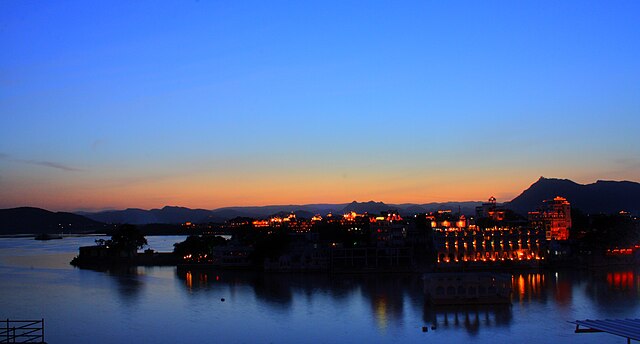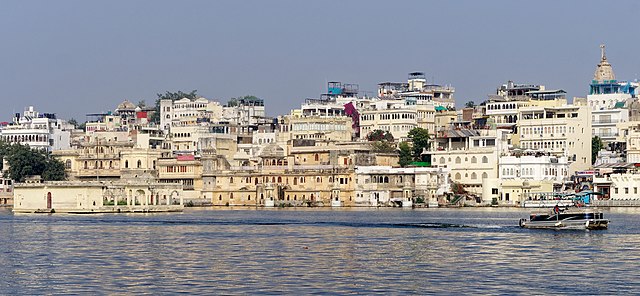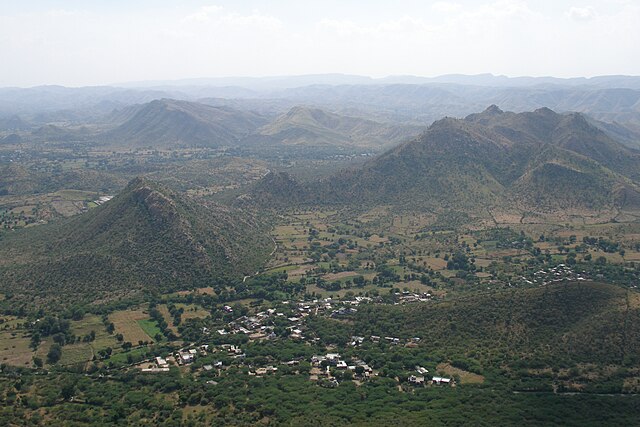Nestled in the heart of Rajasthan, Udaipur is a city that feels like a painting come to life. With its shimmering lakes, majestic palaces, and the rugged Aravalli Hills as a backdrop, it’s no wonder it’s called the Venice of the East. But before you pack your bags and head to this royal gem, let’s talk about something that can make or break your trip: the Udaipur temperature. Ever wondered how the weather shapes your experience in this enchanting city? From scorching summers to chilly winters, Udaipur’s climate is as dynamic as its culture. In this guide, I’ll walk you through everything you need to know about Udaipur’s weather, month by month, so you can plan the perfect visit. Ready to dive in?
Why Udaipur’s Weather Matters for Your Trip
Picture this: you’re strolling along Lake Pichola, the sun glinting off the water, but you’re either sweating buckets or shivering in a thin jacket. Not fun, right? Udaipur’s temperature plays a starring role in how you experience its beauty. The city’s climate is distinctly divided into three seasons—summer, monsoon, and winter—each with its own vibe. Whether you’re chasing warm sunny days or the romance of rain-kissed palaces, understanding the weather helps you pack smart, plan activities, and make the most of your trip. So, let’s break it down and see what Mother Nature has in store for Udaipur.
The Three Seasons of Udaipur
Udaipur’s weather can be split into three acts, like a play. First, there’s summer (March to June), where the sun turns up the heat, often pushing temperatures to a sizzling 40°C or more. Then comes the monsoon (July to September), bringing relief with moderate to heavy rainfall and lush greenery. Finally, winter (October to February) sweeps in with mild days and chilly nights, making it the crowd favorite. Each season paints Udaipur in a different light, and I’ll show you how to embrace them all.
Summer in Udaipur: A Fiery Affair

Summer in Udaipur is like stepping into an oven—hot, dry, and intense. From March to June, daytime temperatures typically hover between 35°C and 45°C, with May being the hottest month. Nights offer some relief, dipping to around 25°C, but don’t expect a cool breeze. The Aravalli Hills might look inviting, but the scorching sun makes outdoor adventures in the afternoon a bit of a challenge. So, how do you enjoy Udaipur when it’s this toasty?
Surviving the Summer Heat
First off, hydration is your best friend. Carry a water bottle like it’s your lifeline, because it kind of is. Early mornings and late evenings are your golden hours for exploring spots like the City Palace or Saheliyon Ki Bari. Indoor attractions, like the Crystal Gallery or Bagore Ki Haveli Museum, are perfect for escaping the midday heat. Lightweight, breathable clothing—think cotton kurtas or linen shirts—will keep you comfortable. And don’t forget sunscreen and a hat; the sun doesn’t mess around here!
Top Summer Activities
Summer might be hot, but it’s also when Udaipur is less crowded, and you can snag great deals on hotels. Take a boat ride on Lake Pichola at sunset when the temperature cools down, or visit the air-conditioned comfort of a local café to sip on a mango lassi. If you’re a budget traveler, summer’s discounted rates make it tempting, but plan your itinerary around indoor or shaded spots to stay cool.
Monsoon in Udaipur: A Romantic Rainfall
When July rolls in, Udaipur transforms into a lush, green paradise. The monsoon season, lasting until September, brings moderate to heavy rainfall, with average temperatures dropping to a more comfortable 23°C to 30°C. The lakes fill up, the hills turn emerald, and the city takes on a dreamy, romantic vibe. Ever seen a palace reflected in a rain-dappled lake? It’s pure magic.
What to Expect During Monsoon
Rainfall in Udaipur during monsoon averages around 70-200 mm per month, with July and August being the wettest. You’ll likely see 4-7 rainy days in June and up to 15 in August. Humidity spikes, often reaching 60-80%, so expect a sticky feel. The good news? The rain usually comes in short bursts, leaving plenty of time to explore. Pack a light raincoat, quick-dry clothes, and sturdy shoes to navigate occasional puddles.
Monsoon Must-Dos
The monsoon is perfect for nature lovers and photographers. Head to Badi Lake or Fateh Sagar Lake to capture the misty beauty of the water and hills. The Monsoon Palace, perched atop a hill, offers breathtaking views of the rain-soaked city. Indoor activities like visiting Shilpgram Crafts Village or enjoying a Rajasthani thali at a local restaurant are great for rainy days. Couples, this is your season—Udaipur’s romantic charm is at its peak when it’s drizzling.
Winter in Udaipur: The Sweet Spot
If Udaipur had a fan-favorite season, winter would win hands-down. From October to February, the city enjoys mild days (20°C to 30°C) and chilly nights (as low as 8°C in January). The clear skies and pleasant weather make it the best time to explore Udaipur’s outdoor attractions without breaking a sweat or bundling up too much. Why do tourists flock here in winter? Because it’s like Goldilocks’ porridge—just right.
Winter Weather Breakdown
October marks the transition from monsoon to winter, with temperatures starting at around 30°C during the day and cooling to 20°C at night. By December and January, daytime highs drop to 20-25°C, and nights can get brisk, especially in open areas like the lakeside. Rainfall is minimal, and you’ll get nearly 11 hours of sunshine daily, perfect for sightseeing. Pack layers—light sweaters for evenings and comfy tees for the day.
Winter Festivals and Activities
Winter in Udaipur is festival season! The Shilpgram Fair in November-December showcases Rajasthani crafts and culture, while Dussehra and Diwali light up the city with vibrant celebrations. Explore the sprawling City Palace, take a ropeway to Karni Mata Temple for panoramic views, or simply wander the bustling markets of Hathi Pol. The crisp air makes long walks around Fateh Sagar Lake or Dudh Talai absolutely delightful.
Month-by-Month Temperature Guide
Want a quick snapshot of Udaipur’s temperature throughout the year? Here’s a month-by-month breakdown to help you plan. These are averages based on historical data, but weather can be a bit of a wildcard, so always check closer to your trip.
January: Chilly and Charming
January is Udaipur’s coldest month, with highs of 26°C and lows around 8°C. The days are sunny, but nights call for a jacket. Perfect for exploring temples like Jagdish Mandir or enjoying a cozy evening by the lake.
February: Spring’s First Kiss
Temperatures creep up to 28°C during the day and 10°C at night. The Mewar Festival in February or March adds a cultural flair, making it a great time for heritage lovers to visit.
March: Warming Up
March sees daytime highs of 33°C and lows around 15°C. The weather is still pleasant, but the summer heat starts creeping in by the end of the month. Early March is ideal for outdoor adventures.
April: Summer Knocks
April is hot, with temperatures ranging from 20°C to 38°C. It’s a shoulder season, so you might find fewer crowds and better deals, but stick to early morning or evening outings.
May: The Heat Peaks
May is the hottest month, with highs hitting 41°C and lows around 25°C. Indoor attractions and evening boat rides are your best bet to beat the heat.
June: Monsoon’s Arrival
June marks the start of monsoon, with temperatures between 24°C and 37°C. Expect 4-7 rainy days and around 50-70 mm of rainfall. The city starts turning green, and it’s a quieter time to visit.
July and August: Rainy Days
These are the wettest months, with highs of 29-31°C and lows of 23-25°C. Rainfall can reach 200 mm, especially in August. Pack for rain and enjoy the lush landscapes.
September: Monsoon Fades
September sees the monsoon winding down, with temperatures between 23°C and 32°C. Rainfall drops to around 100 mm, and the city feels fresh and vibrant.
October is a sweet spot, with highs of 33°C and lows of 18°C. The weather is pleasant, and the post-monsoon greenery makes it a great time for photography.
November: Perfectly Pleasant
November offers highs of 30°C and lows of 14°C. The Shilpgram Fair draws crowds, and the weather is ideal for exploring every corner of Udaipur.
December: Winter’s Charm
December brings highs of 27°C and chilly nights around 10°C. It’s peak tourist season, so book early and enjoy the festive vibe.
Packing Tips for Udaipur’s Weather

Packing for Udaipur is like preparing for a choose-your-own-adventure book—each season demands a different approach. In summer, stick to light, breathable fabrics like cotton and linen, plus sunglasses and a wide-brimmed hat. Monsoon calls for waterproof gear, quick-dry clothes, and non-slip shoes. Winter travelers should pack layers—think t-shirts for sunny days and sweaters or shawls for chilly evenings. A good pair of walking shoes is a must year-round, as Udaipur’s charm lies in its walkable streets and scenic trails.
Best Time to Visit Udaipur
So, when’s the best time to visit Udaipur? If you love pleasant weather and vibrant festivals, winter (October to February) is your go-to. For those who don’t mind a bit of rain and want a quieter, greener Udaipur, the monsoon (July to September) is a romantic choice. Summer (March to June) is best for budget travelers willing to brave the heat for discounts and fewer crowds. Ultimately, it depends on what vibe you’re chasing—Udaipur’s magic shines through in every season.
How Weather Shapes Udaipur’s Attractions
Udaipur’s weather doesn’t just affect your wardrobe; it transforms how you experience the city’s attractions. In winter, the City Palace feels like a royal wonderland under clear blue skies. During monsoon, the lakes like Fateh Sagar and Rang Sagar shimmer with fresh water, and the Monsoon Palace offers misty, ethereal views. Even in summer, the evening boat rides on Lake Pichola or a visit to the shaded gardens of Saheliyon Ki Bari keep the experience magical. The weather sets the stage, and Udaipur’s beauty is the star.
Tips for Weather-Proofing Your Udaipur Trip
No matter the season, a few tricks can make your trip weather-proof. Always check the forecast a week before your visit—Udaipur’s weather can be unpredictable, especially during monsoon. Book accommodations with air conditioning for summer and heating for winter. If rain’s on the horizon, prioritize indoor attractions like museums or art galleries. And always, always have a backup plan—think cozy cafés or cultural shows for unexpected rainy afternoons.
Conclusion
Udaipur’s temperature is more than just numbers on a weather app—it’s the heartbeat of your experience in the City of Lakes. From the fiery summers to the romantic monsoons and crisp winters, each season brings a unique flavor to this royal destination. By understanding the weather, you can plan a trip that’s not just comfortable but unforgettable. Whether you’re sailing across Lake Pichola, exploring the grand City Palace, or soaking in the monsoon magic at the Monsoon Palace, Udaipur’s climate sets the stage for memories that last a lifetime. So, what are you waiting for? Pick your season, pack smart, and let Udaipur weave its spell on you!
FAQs About Udaipur Temperature
1. What is the best month to visit Udaipur for pleasant weather?
November and December offer mild temperatures (14°C to 30°C) and clear skies, making them ideal for sightseeing and outdoor activities.
2. How hot does Udaipur get in summer?
Summer (March to June) can see temperatures soar to 41°C, with May being the hottest month. Early mornings and evenings are best for exploring.
3. Does it rain a lot in Udaipur during the monsoon?
July and August are the wettest months, with 100-200 mm of rainfall and up to 15 rainy days. Rain usually comes in short bursts, leaving time for exploration.
4. Is winter in Udaipur too cold for sightseeing?
Not at all! Winter (October to February) has daytime highs of 20-30°C, though nights can dip to 8°C. Pack layers, and you’ll be comfortable exploring all day.
5. How should I pack for Udaipur’s monsoon season?
Bring a light raincoat, quick-dry clothes, and non-slip shoes. An umbrella and waterproof bag for electronics are also handy for sudden showers.

